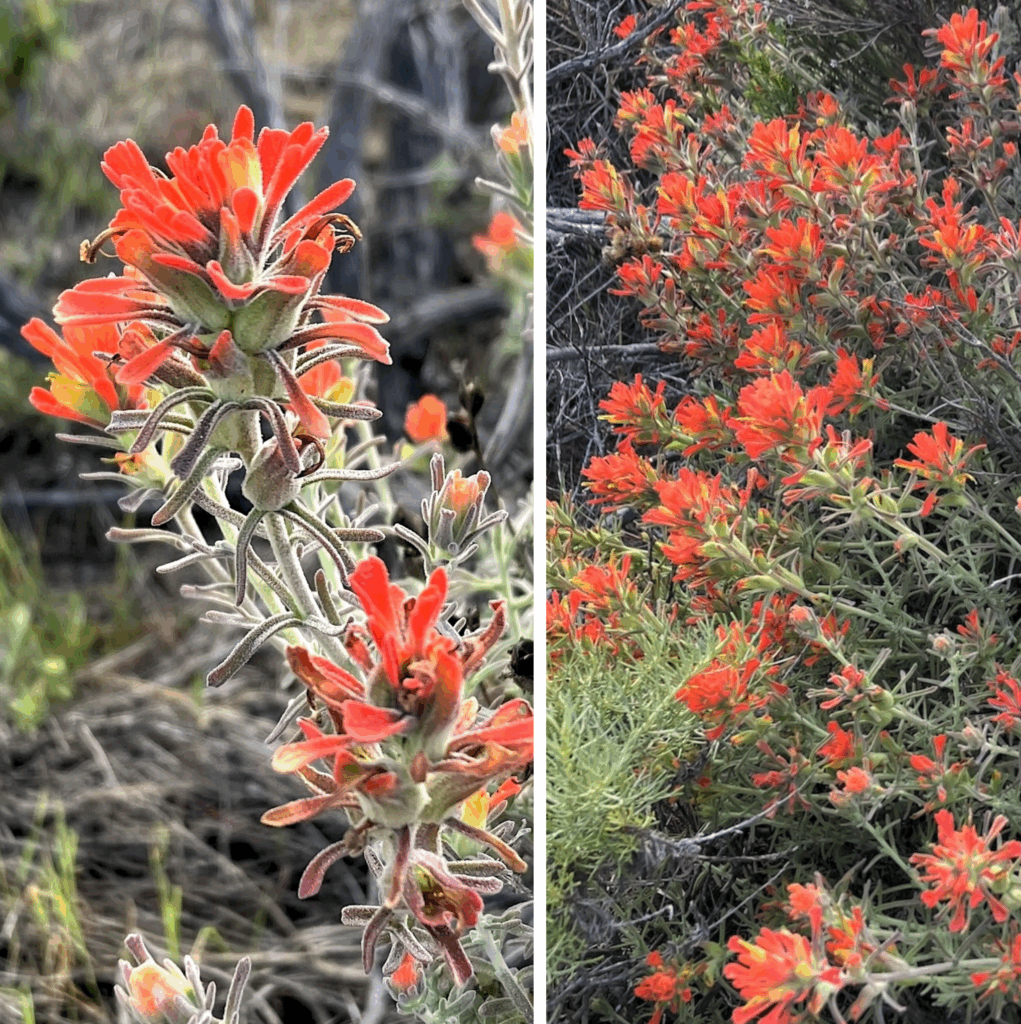Observations of the Outdoor Environment
April 26, 2025 – Since the start of the rain-season on Oct. 1, 2024, only 4.19″ of rain has been measured at San Diego Airport, less than half the historical average. The La Niña drought contrasts starkly with recent rainy El Niño winters. This year floral displays in native-vegetation areas have been noticeably subdued. However, one plant that has shown abundant blooms is Castilleja foliolosa, Woolly Paintbrush, a multi-stem perennial in the Orobanche family not uncommon in low-lying coastal sage-scrub as on rocky wind-sculpted slopes by the ocean between Camp Pendleton and the Mexican border. The Paintbrush’s red-orange color actually adorns the tips of its leaf-like bracts rather than its inconspicuous tubular flowers. In the close-up photo above a few wilting narrow tubular flowers can be detected among the colorful bracts. The bracts persist for longer, giving the plant prominence in its native habitat.
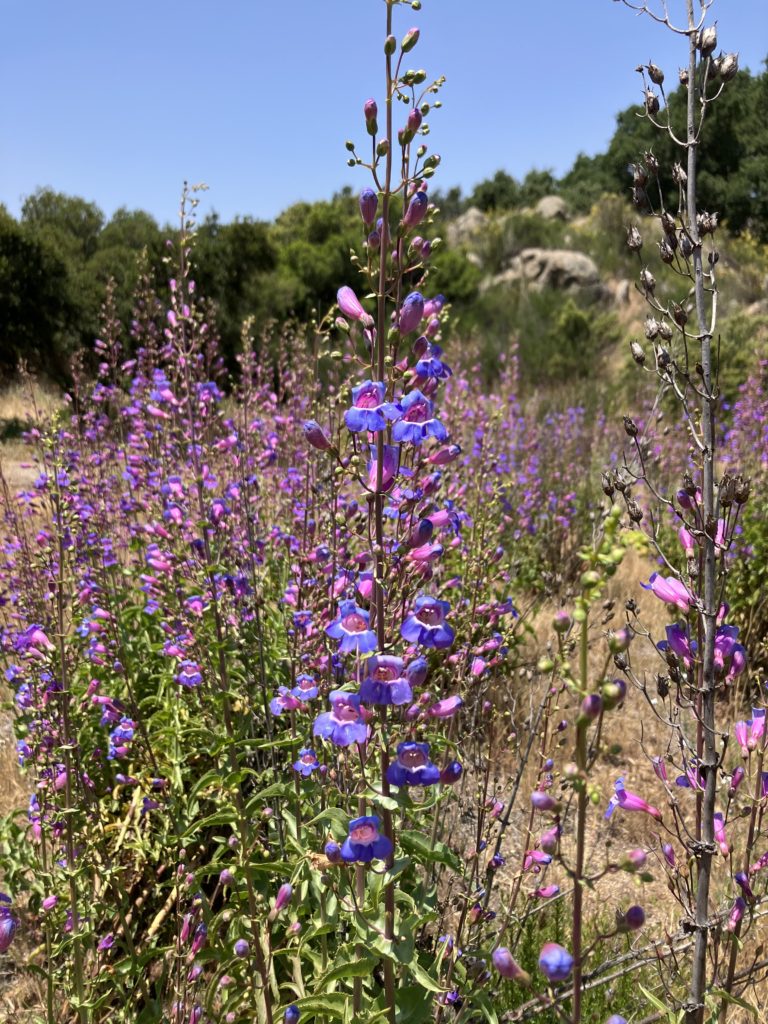
May.2024 – Pleasant surprise while hiking through a clearing near Potrero in South County – a colony of Showy Penstemon (Penstemon spectabilis var. s) more than 3′ tall. Penstemons are among the most colorful perennial wildflowers in the region due to their size, abundant stems and towering arrays of throaty blooms.
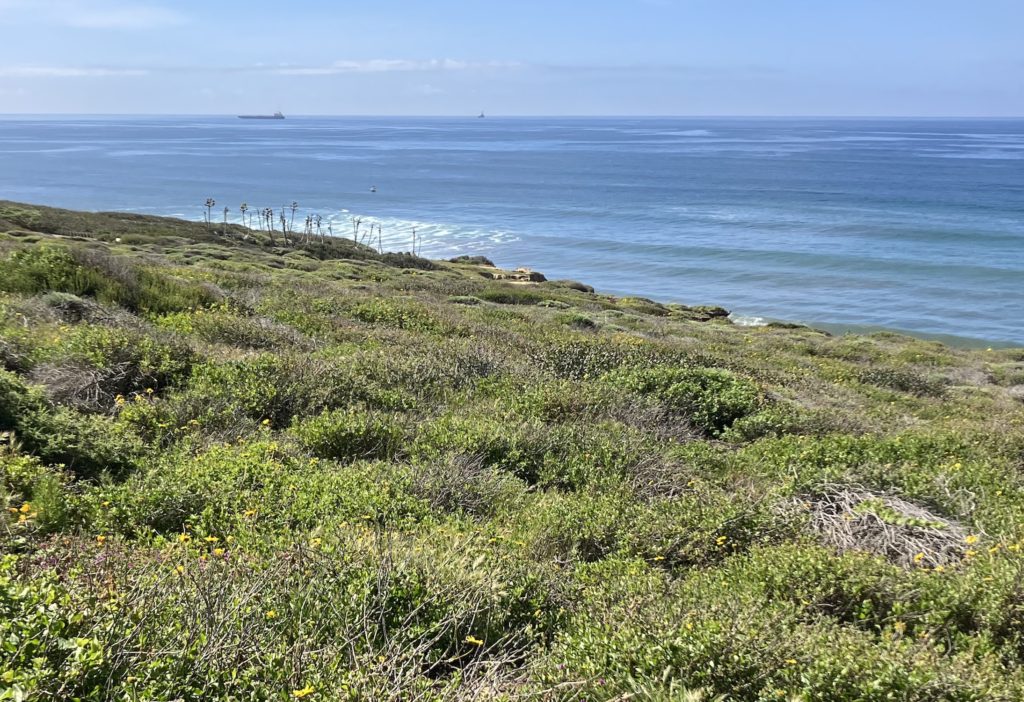
Mar.2024 – Cabrillo National Monument is only 160 acres but contains a number of botanical treasures. This view SW along the ocean-trail shows low maritime sage-scrub habitat of amazing pristine quality. The public owes thanks to the park’s rangers who have done an outstanding job preserving the native flora while still allowing hundreds of thousands of visitors annually to enjoy the trails and views. In the center-left of this photo two dozen remnant stalks of Agave shawii are visible from one of the largest natural populations of that species in the USA. Each winter one or two of the Agaves will send up robust new stalks with dense sticky clusters of insect- and bat-attracting flowers. The Shaw Agave is still relatively common on undeveloped coastal slopes in Baja California Norte but it is now rare on the US side of the border.
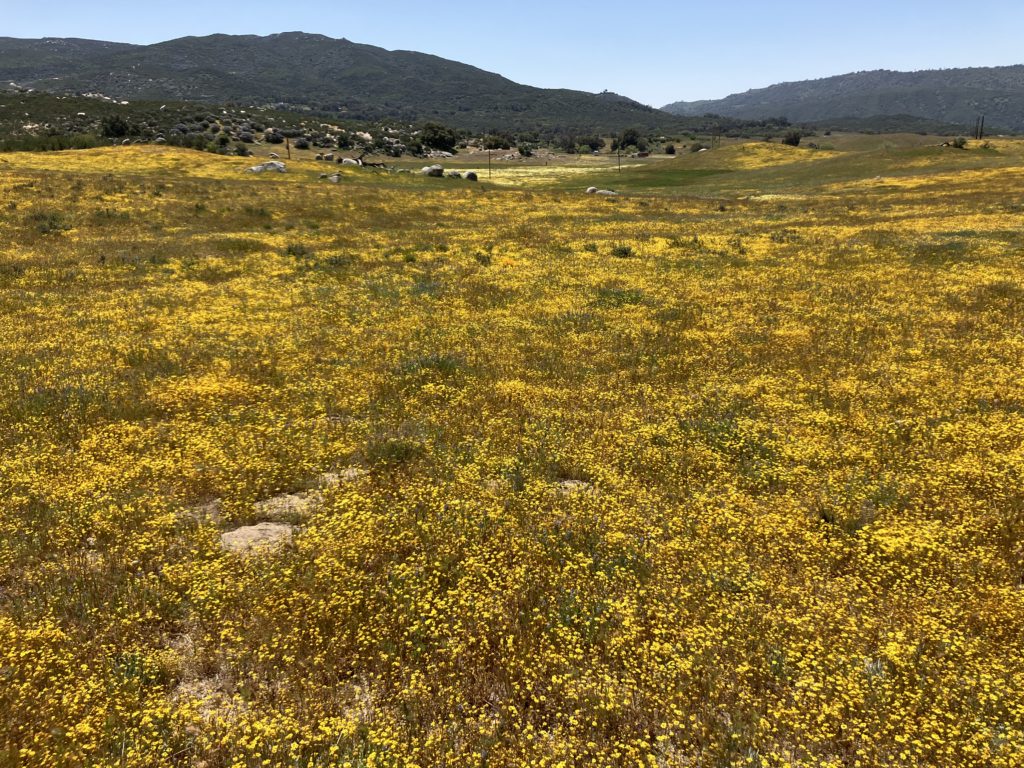
Mar.2023 – A startling display of color along SR-79 near Lake Henshaw where some 30 acres of historic ranch-land were recently covered with Goldfields (Lasthenia spp.) and, in the distance, creamy Desert Dandelions (Malacothrix californica). The bright carpet makes a brilliant contrast with the dark green chaparral of the Volcan Mountains. Plentiful winter-rains yield amazing floral displays that can endure for weeks at high elevations. Thankfully this particular range has not been overrun by non-native Bromes and other weeds that are common on the county’s old grazing-lands. The common name Goldfields recalls the California Gold Rush of the late-1840s and early 1850s; thousands of gold-seekers would have passed by this field on their way through the Warner Ranch.
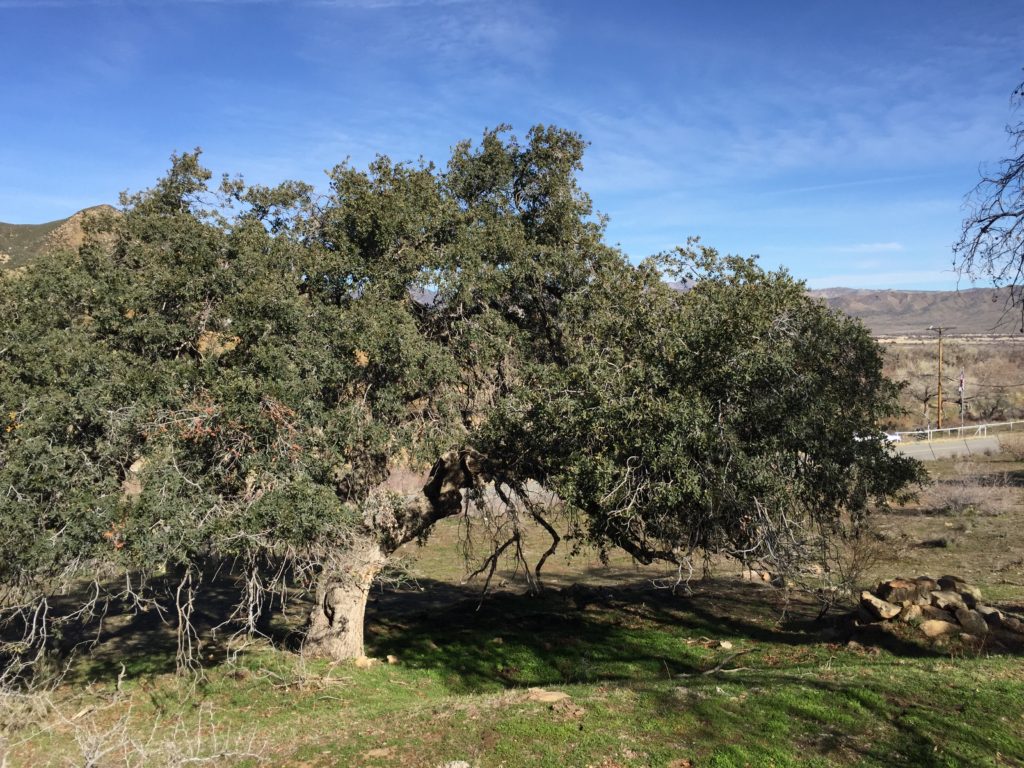
Feb.2023 – A small colony of old white-bark oaks grows at the bottom of Banner Canyon on the edge of the San Felipe Valley in desert-transition habitat. This photo of one looks NW across SR-78 into the San Felipe Valley Wildlife Area. In Southern California we call these “Engelmann Oaks” (Quercus engelmannii) and consider their range cismontane; large colonies grow around Pauma Valley, Ramona, Santa Ysabel and Alpine. But this small San Felipe population may indicate that Q.engelmannii came from the east and is synonymous with the Mexican Blue Oak (Quercus oblongifolia), which is found in similar desert-transition habitat in Southern Arizona and mainland Mexico. Indeed, the great botanist John Torrey considered the California and Arizona types to be the same species.

Feb.2023 – This old specimen of Cliff Spurge (Euphorbia misera) on a S-facing slope along the Bayside Trail at Cabrillo National Monument on Point Loma grows out of cracks on a hard sandstone cliff in what appear to be impossible circumstances. The species was discovered by George Barclay, a botanist on the voyage of HMS Sulphur, which anchored at Ballast Point in late-October 1839. At the time of the visit it had not rained for months; the region appeared desolate to the English visitors. Barclay’s collection lacked much foliage; it may well have seemed to him a miserable drought-tolerant plant. After winter-rains, however, Cliff Spurge comes to life.

Mar.2017 – The Desert Lily (Hesperocallis undulata) is one of the more elusive and spectacular wildflowers of Anza-Borrego Desert State Park and always a pleasure to discover. It only appears after generous rains penetrate to its bulbs, which typically reside more than 12 inches underground. Seeking the Desert Lily in a dry year can be frustrating, but in wet years like 2017 large colonies may appear surprisingly. It is one of few colorful herbaceous monocots found in the low desert. Although referred to as a “lily”, the species is classified in the Agave family so is more closely related to the large Desert Agave (Agave deserti) and Mojave Yucca (Yucca schidigera) than to Mariposa Lilies commonly seen on the western side of the mountains.

